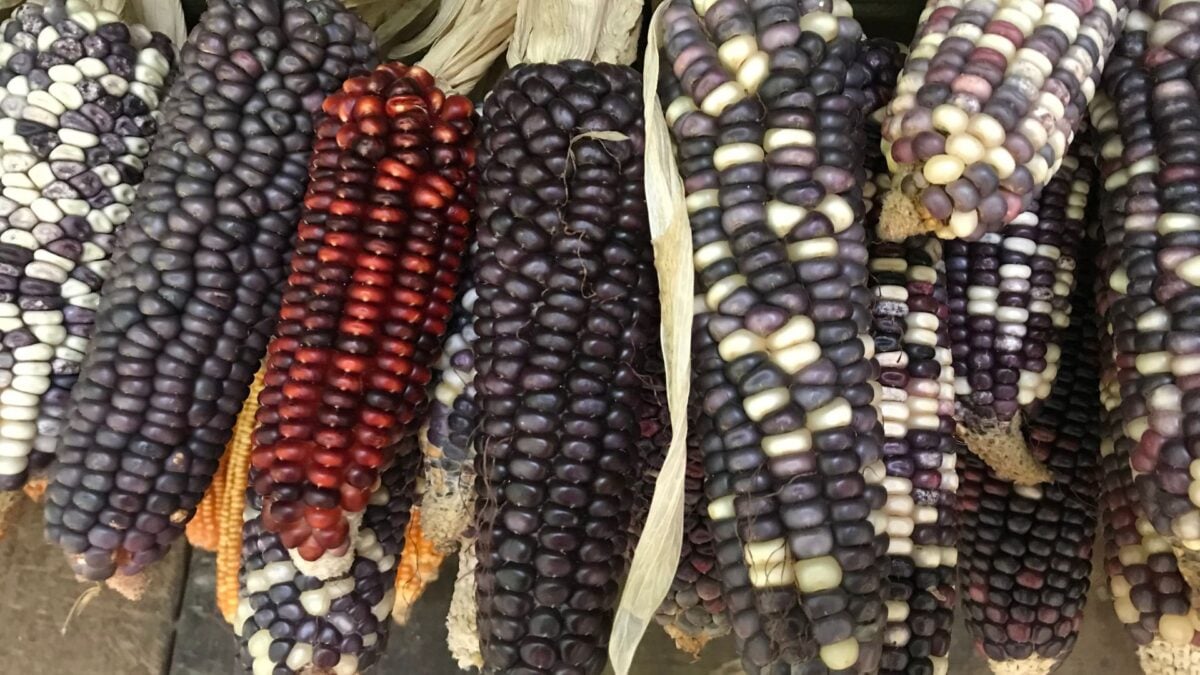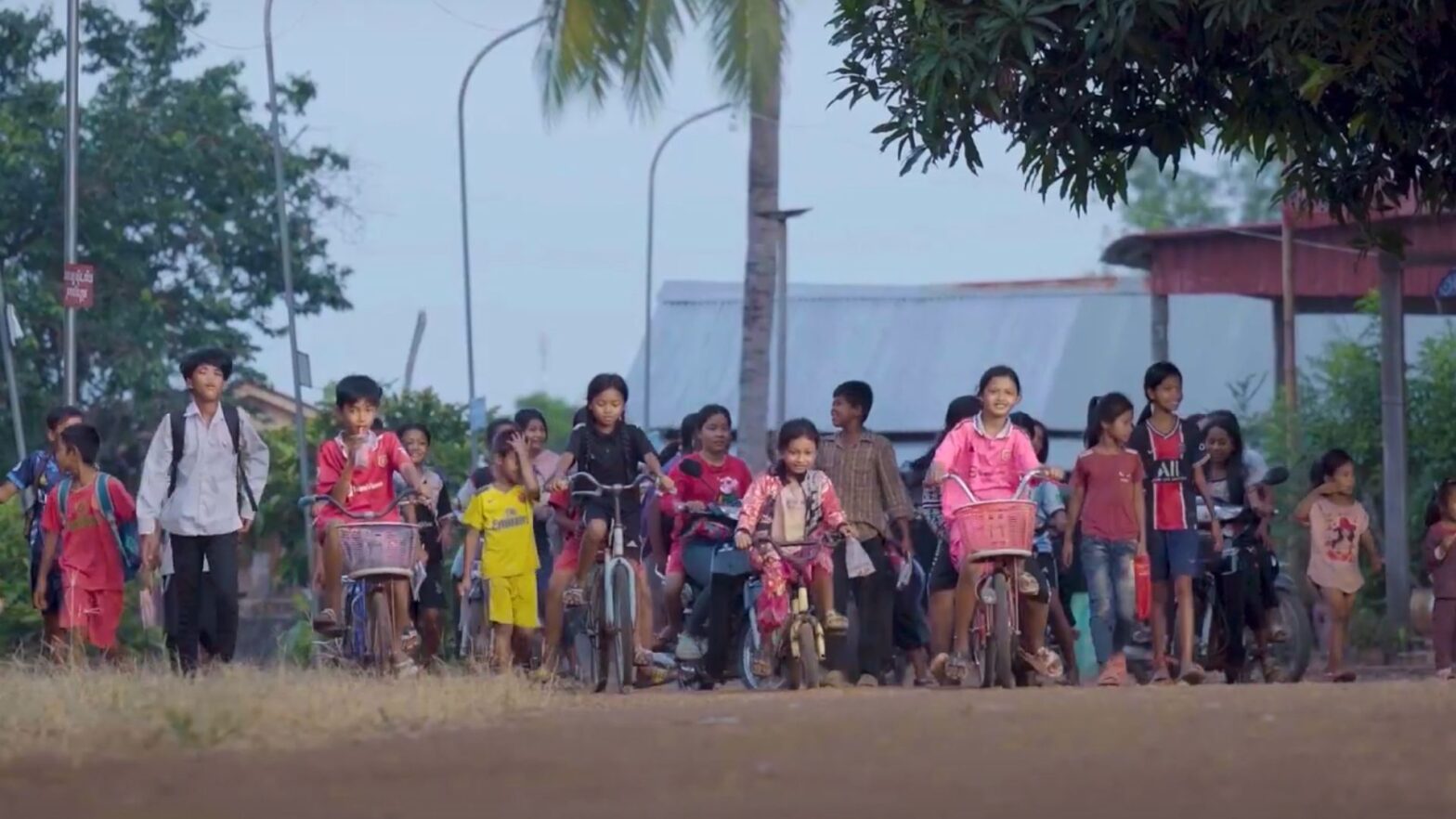YÊN BÁI & SƠN LA, VIET NAM – Early one winter morning, Khang Chờ Dê of Chế Cu Nha hamlet in Yên Bái province was woken by loud knocking on his door. Sào, his relative, needed some red corn kernels, an indigenous crop used by Hmong people in northern Viet Nam for spiritual offerings to ward off bad luck.
The son of a shaman, Dê understood the importance of red corn in ritual practices. He quickly took some kernels from his kitchen, wrapped them up neatly and handed them to his relative.
Back in bed, the 46-year-old farmer pondered the scarcity of the indigenous cúa bua (in Vietnamese), or quav npua (in Hmong)corn seeds in Chế Cu Nha, his family’s ancestral home. For generations, indigenous corn crops have been essential to Hmong spiritual and cultural traditions, as well as helping to strengthening their autonomy in agricultural cultivation.
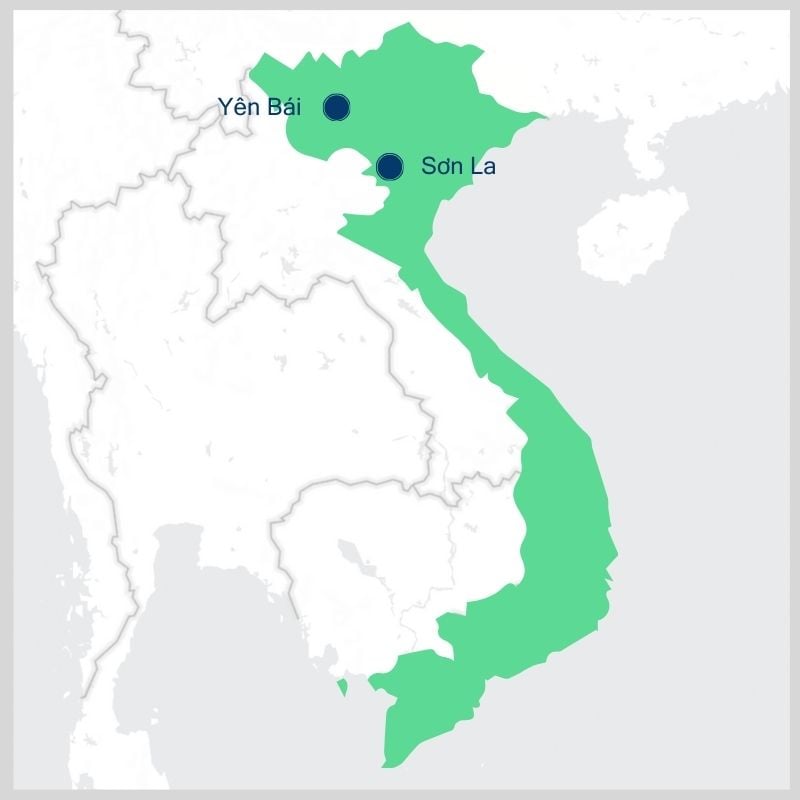
Yet under the pressure of food security and poverty reduction goals in the past few decades, Dê’s family are among the last few to save these seeds from extinction.
In Vân Hồ district’s Sơn La, where many Hmong people have lived for generations, the search for indigenous corn can be likened to looking for a needle in a haystack.
“The indigenous cultivar once grown here was called đá mèo (in Vietnamese) corn,” said Đặng Phi Hùng, the Chairman of the People’s Committee of Vân Hồ Commune. “Their yield is low and their long stalks are easily damaged during storms, so people replaced them with more productive varieties.”
According to Hùng, đá mèo corn has become extinct in Vân Hồ. Tráng A Giàng, the chairman of the commune’s Farmers Association, once a corn farmer, also confirmed that the corn variety had disappeared around 2002 or 2003.
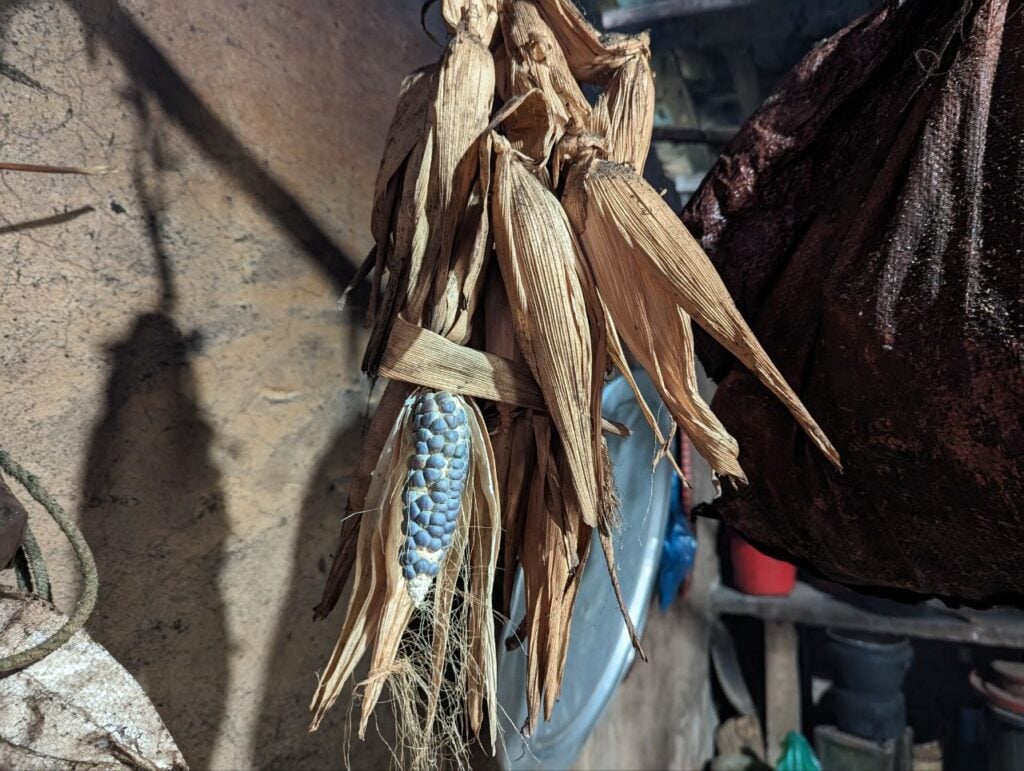
A cultural and spiritual artifact
Living in high mountains and stone forests unsuitable for rice cultivation, generations of Hmong people made corn their staple, a source of their livelihoods, a key winemaking ingredient and an integral element in religious rituals.(*)
These days, the Hmong people in Mù Cang Chải district, Yên Bái province no longer include corn in every meal and instead feed the grain to chickens and pigs. Livestock and poultry prefer indigenous corn, farmers in Chế Cu Nha hamlet say. Such varieties also keep animals full for a longer period and boost growth. Hmong people find them a more economical type of feed than hybrid corn.
“Indigenous corn is sweeter and more fragrant, which is why cattle prefer it. They always finish their food. Their meat is also leaner than that of cattle fed with hybrid corn,” farmer Tráng A Sồng of Vân Hồ commune told Mekong Eye.
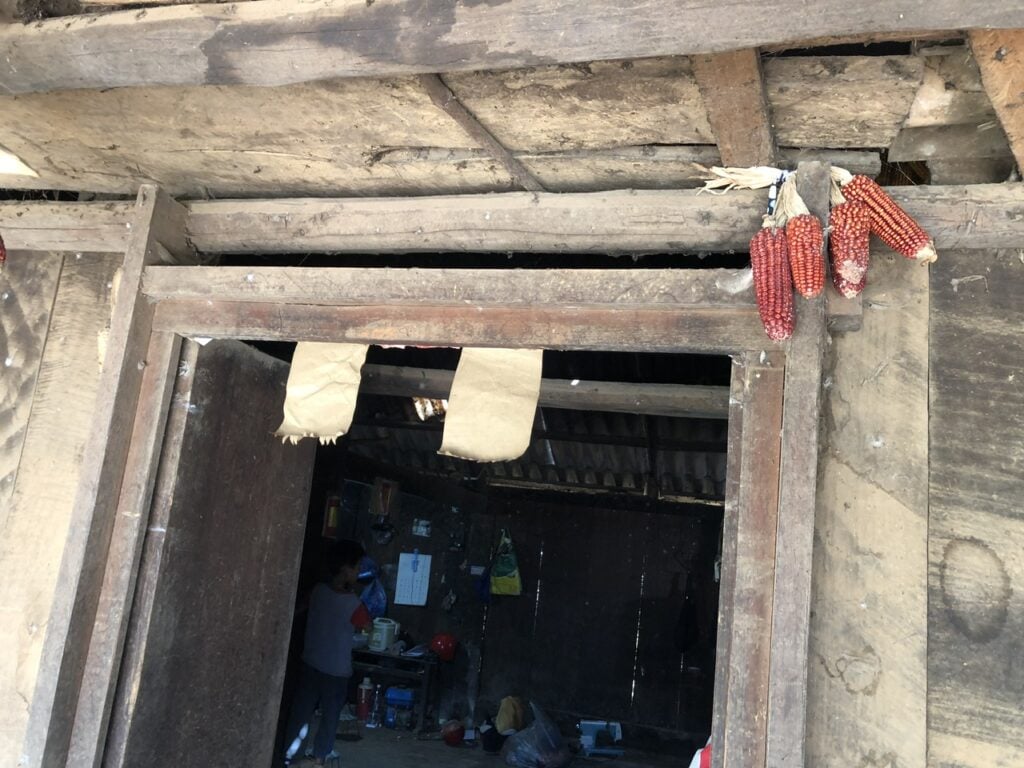
Indigenous corn also plays an essential role in the spiritual life of Hmong families. They believe corn kernels and rice grains can ward off evil spirits.
Red corn cobs are hung in front of Hmong doorsteps to keep incorporeal beings at bay. In the last afternoon of a year, people throw cobs to all corners of their houses, believing the cobs attract good fortune and repel bad luck.
Hmong people also use indigenous corn as offerings during religious rituals. In some areas, the ritual consists of popping corn kernels in three batches – one for the family’s consumption and the other two to be placed on an altar.
Indigenous corn is also used in a special worshipping ceremony called Pó Tơ (in Vietnamese), Pob Tawb (in Hmong), which is performed to find lost items or to seek answers. Colored corn kernels are put onto a rice strainer, which is put on a gourd balanced by a wooden stick.
As the shaman sings mystical songs, this setup serves as a medium for the gods to enter Hmong homes and address people’s concerns. The shaman reads answers either by looking at the direction of the wooden stick or tapping on the strainer.
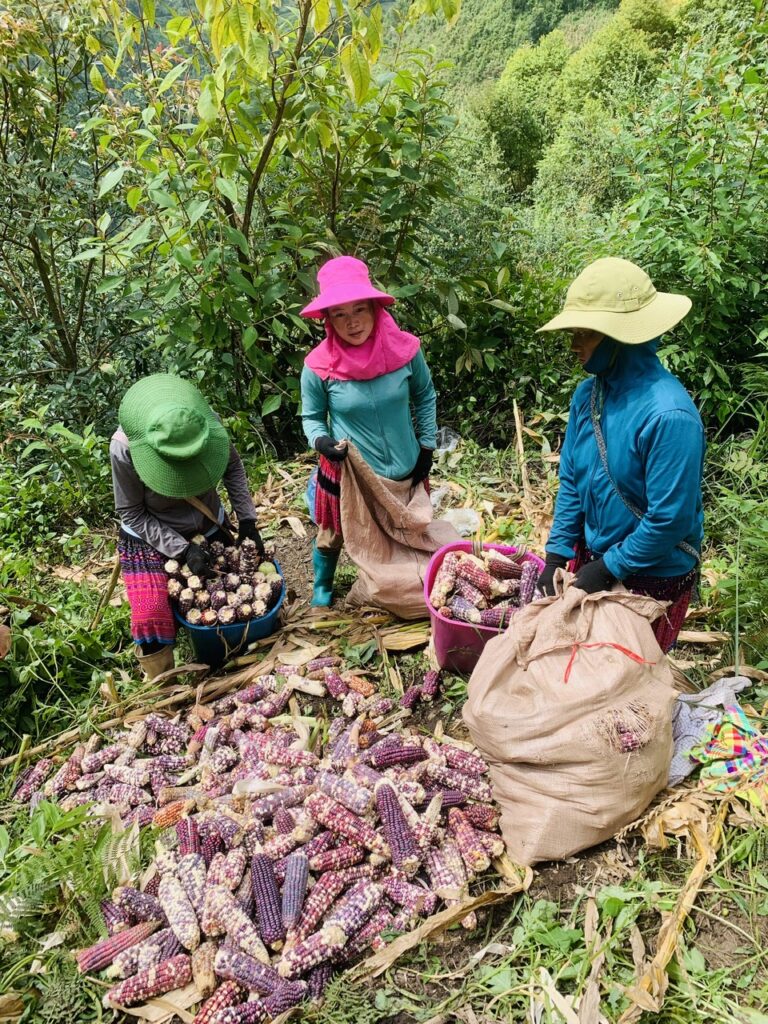
To acquire indigenous corn seeds for such ceremonies, Hmong people in Chế Cu Nha who do not plant the crop help those who do harvest it and receive seeds in exchange for their labor.
“Every year, my family preserves a piece of land for indigenous corn to keep it for ceremonies,” said Dông, a 26-year-old mother. “My father-in-law is a shaman and one of the elders of the extended family, so it is his unspoken order that we grow this species for important rituals, not only for our family, but also for our neighbors.”
Autonomy and adaptability
In many Hmong people’s memories, indigenous corn crops were highly adaptive to the challenging mountainous terrain and climate, characterized by substantial day-night temperature fluctuations and frequent water shortages.
Khang Chờ Dê fondly remembers the striped corn variety his family planted in a primeval forest area of the village that showcased white, black and red colors on its cob. “They thrived, boasting long robust stalks, big cobs the size of a woman’s bicep, and even colorful kernels,” Dê recalled.(**)
Such high-yielding and robust plants are typically preserved for seed production.
Associate Professor and Deputy Director of the Vietnam Academy of Agriculture, Vũ Văn Viết, who conducted research on the indigenous corn of Điện Biên, Lai Châu and Sơn La provinces from 2000 to 2015, said such crops have certain characteristics to thrive in harsh weather.
“Indigenous corn [cobs] bow down during ripening,” Viết explained. “Hmong people often allow the corn to ripen in the field. Upon harvest, they transport [the cobs] to family storage in field camps. This characteristic is crucial as the bowed cobs are covered by their husks, which prevent dew and rainwater penetration, and protect them from weevil infestations.
“In contrast, hybrid corn is more susceptible to dew and water infiltration, therefore vulnerable to weevil infestations. This is why many Hmong people believe that hybrid corn does not have seeds, when [in reality] they are simply infested with weevils,” Viết said.
Growing indigenous corn also requires innovative agricultural techniques that reward Hmong people with ecological sustainability and greater economic autonomy.
In challenging topography like rock caves, Hmong people carry soil all the way up to the caves to grow corn there. To prevent soil erosion in steeper fields, they often stack rocks to form cliffs.(**)
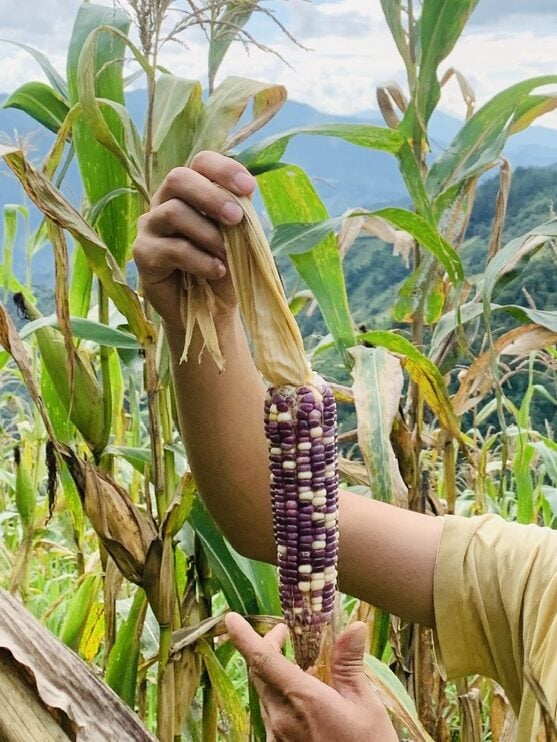
Indigenous corn fields are frequently intercropped with vegetables, squash, beans, potatoes and cucumbers. This practice increases land use efficiency, boosts food supply and enriches soil. Meanwhile, hybrid corn is farmed as a monocrop, thus making farmers more dependent on the external market for other food sources.
Lý Thị Pàng, a farmer from Chế Cu Nha, remarked: “Those cultivating traditional corn varieties must exert considerable effort to preserve them, whereas those cultivating new corn species spend money on seeds and forfeit their autonomy.
“Prior to 1980, Hmong people excelled in pure-breeding techniques. Everyone was actively seeking the best varieties to preserve. Consequently, corn varieties were frequently named after the first grower or their place of origin,” said Dê.
Indigenous corn disappearing
Pàng, a farmer in Chế Cu Nha, recalled when new hybrid corn seeds were distributed about 20 years ago by commune officials. They were known as “model corn” and “model rice”.
Those who agreed to grow these new species received free fertilizer. The allure of higher productivity, reduced cultivation time and complimentary fertilizers led many to adopt the new corn species. Consequently, the indigenous corn varieties were gradually lost.
Up until now, Pàng’s family has lost their indigenous corn species, as well as their plain rice and glutinous rice species.
Khang A Mang’s family are among those who adopted hybrid corn. Mang acknowledges the productivity appeal of the new varieties of corn, but said it cannot replace indigenous corn in spiritual culture. His family chose to grow both.
Yet due to cross-pollination degeneration and the rising prevalence of hybrid corn cultivation in the region, there are increasingly fewer independent corn fields dedicated solely to purebred indigenous corn, and the quality of indigenous corn is diminishing.
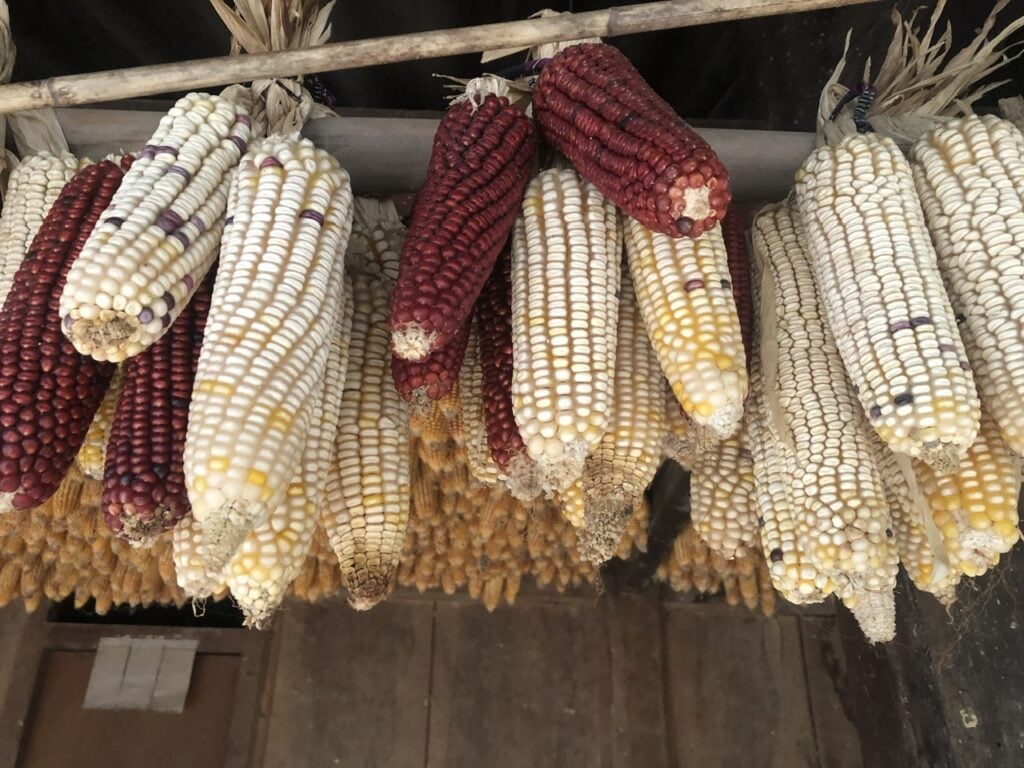
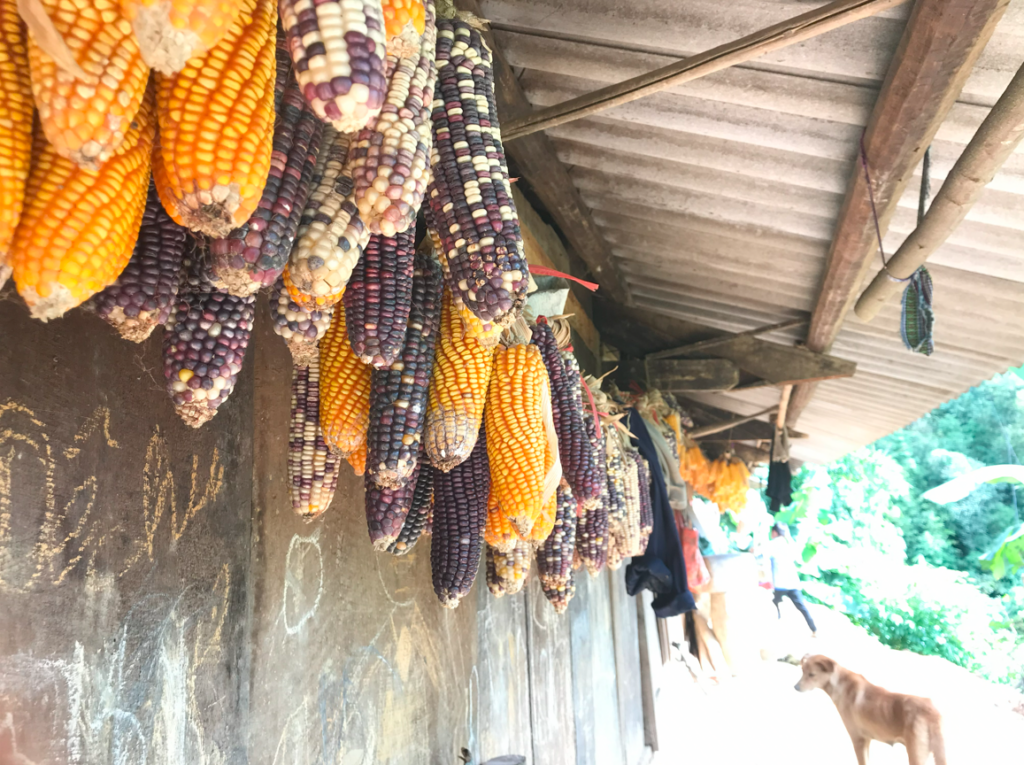
Although hybrid corn undeniably contributed to hunger eradication and poverty reduction, an official goal set by the Vietnamese government, throughout the transition from the early 2000s to now, Hmong people had to trade off productivity with further dependence on external supplies, including seeds, fertilizers, herbicides and insecticides.
Hmong farmers are not the only ones worried about the loss of autonomy. Local government officials in Chế Cu Nha commune in Mù Cang Chải district, who asked that their names not be used, are also concerned that hybrid corn species are slowly undermining the Hmong people’s economic autonomy and self-sufficiency, while posing a risk of accumulating significant debts for agricultural inputs.
Meanwhile, long-term cultivation of hybrid corn with the continuous use of fertilizers, herbicides and pesticides contributes greatly to soil quality deterioration. In Vân Hồ, Sơn La, long-term use of chemical fertilizers has made the soil inhospitable to indigenous corn. “The land is now completely degraded, and our only option is to grow hybrid corn,” said Tráng A Chu, a village elder from Hua Tạt hamlet.
Remaining efforts
Hmong people in Vân Hồ these days have accepted the lack of indigenous corn during spiritual ceremonies. Traditional dishes using indigenous corn grains are also gradually being replaced by rice and other types of food. One such dish, mèn mén, is slowly slipping from the memory of a typical Hmong child since it is only served a few times a year.
Even Dê, who understands well the irreplaceable role of indigenous corn in Hmong spiritual practices, admits that preserving indigenous seeds is a big challenge due to cross-pollination and the prevalence of hybrid fields.
Many Hmong people in Chế Cu Nha believe that the remaining indigenous corn varieties will eventually disappear, except for cúa bua/quav npua corn. “If we lose that corn species, we will lose a large part of the Hmong cultural history,” Khang Nhà Trang, a 64-year-old shaman at Chế Cu Nha, remarked.
According to Associate Professor Vũ Văn Viết, indigenous corn accounts for roughly 35% of all maize in northern Vietnam. Beside the Hmong people’s efforts, indigenous seeds are also being preserved at several institutes and research centers.
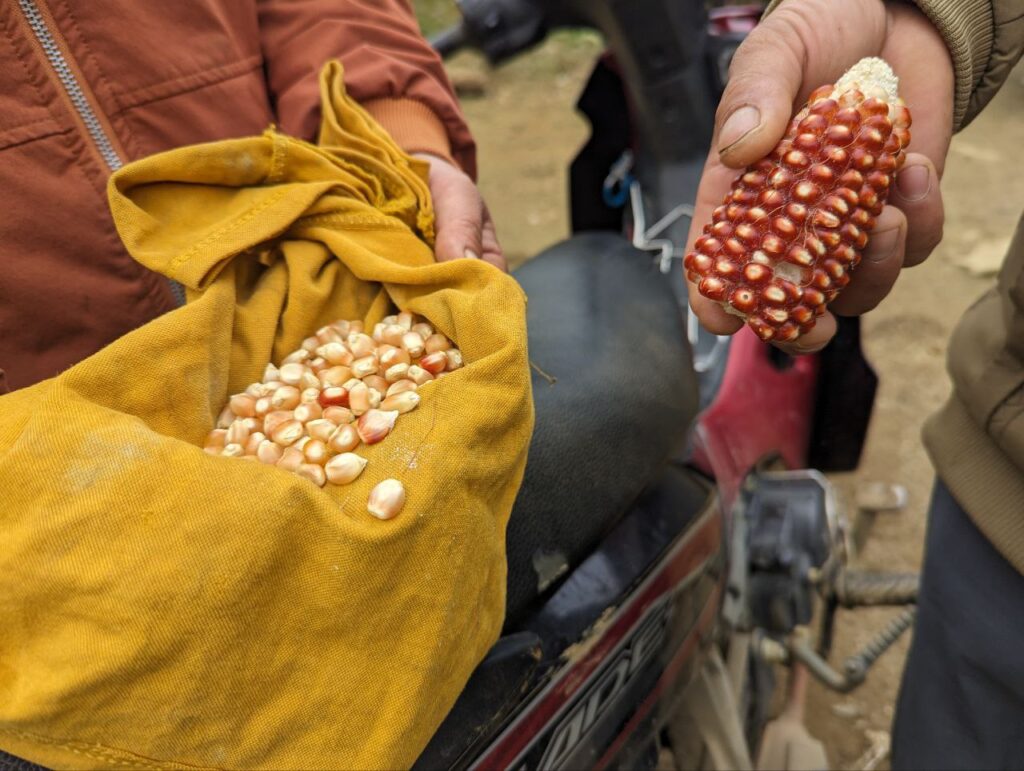
At the Crop Development Research Institute, seeds are collected from Hmong groups in Điện Biên, Sơn La and Lai Châu, dried, bottled and classified for short-term, medium-term and long-term storage.
However, these seeds lose their vitality after a certain period of storage and the cycle must be repeated. Hmong people still play a key role in preservation with their traditional seed saving practices.
Cultural Survival, an organization promoting the rights of indigenous ethnic groups, once remarked: “Indigenous corn embodies the spirit of ancestors and can mobilize entire communities to protect their territories, lifestyles and traditional indigenous knowledge systems. Saving native corn is a sustainable way to adapt to climate change and ensure the well-being of future generations.”
“Indigenous corn has low nutritional and fertilizer needs. You simply sow it and without much attention, it will still be productive,” said Associate Professor Vũ Văn Viết.
“Its nutritional needs can mainly be satisfied by natural farming. In the future, the Hmong people must return to their indigenous crops,” he added.
References
(*) LE, Sy Giao; NGUYEN, Thi Thu Huyen (2017), “Culinary culture related to corn of the White Hmong people in Dong Van district, Ha Giang province” (Research and study), Writers’ Association Publishing House, Hanoi.
(**) DUONG, Quynh Phuong; NGUYEN, Viet Hung; NGUYEN, Hoa Hau, “Agricultural livelihoods of the Hmong people in the northern mountainous region,” Ethnicity & Times magazine, No. 139 -140, page 39-42


